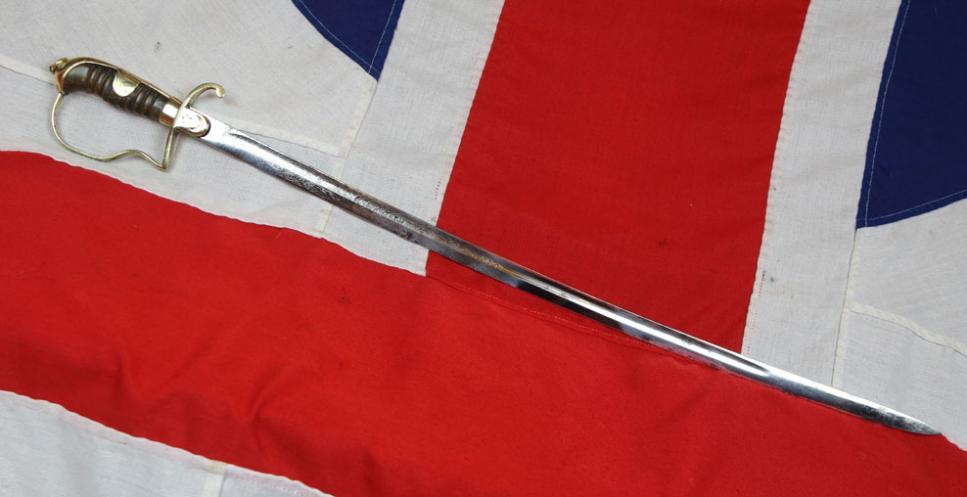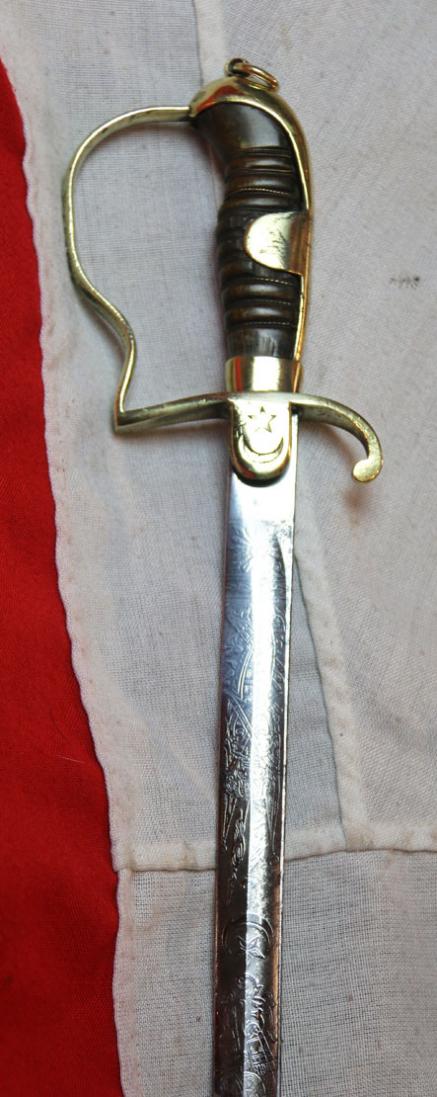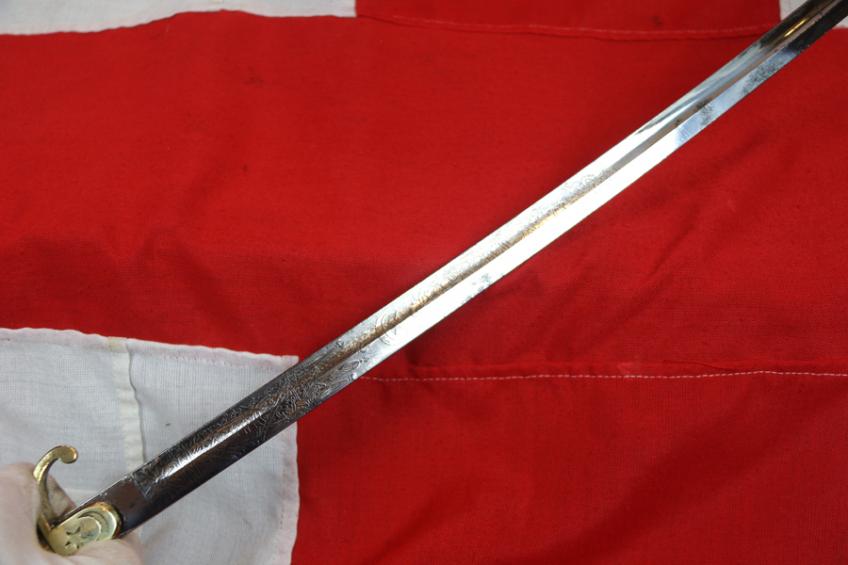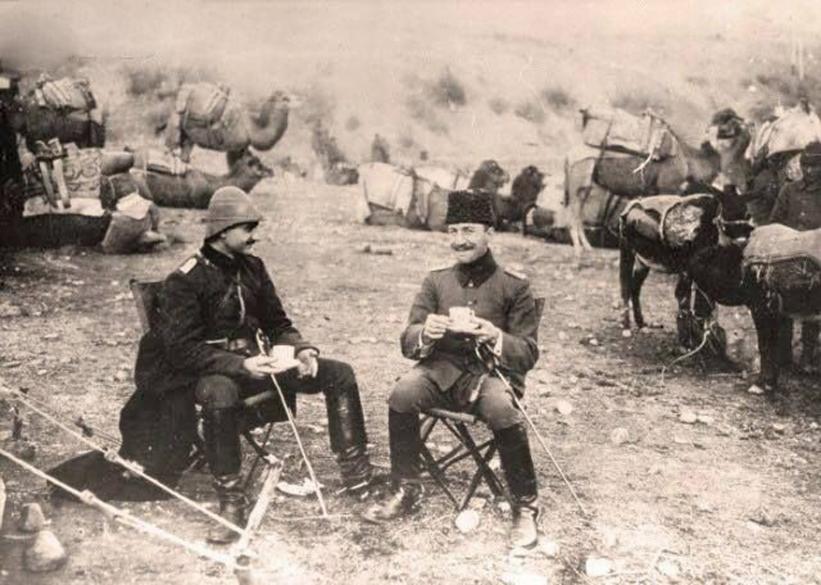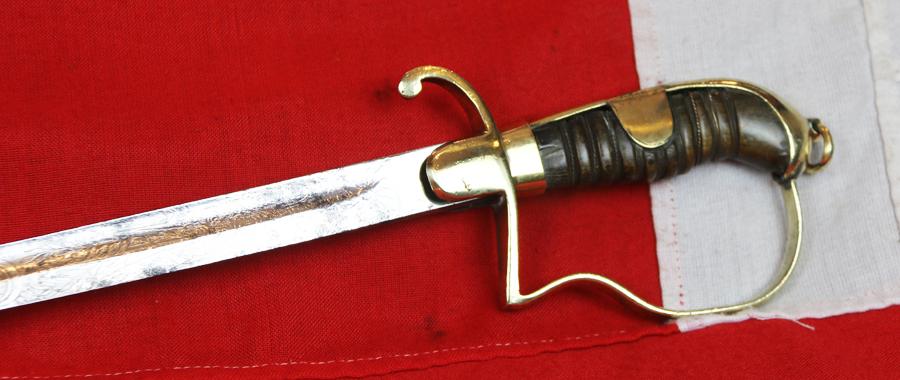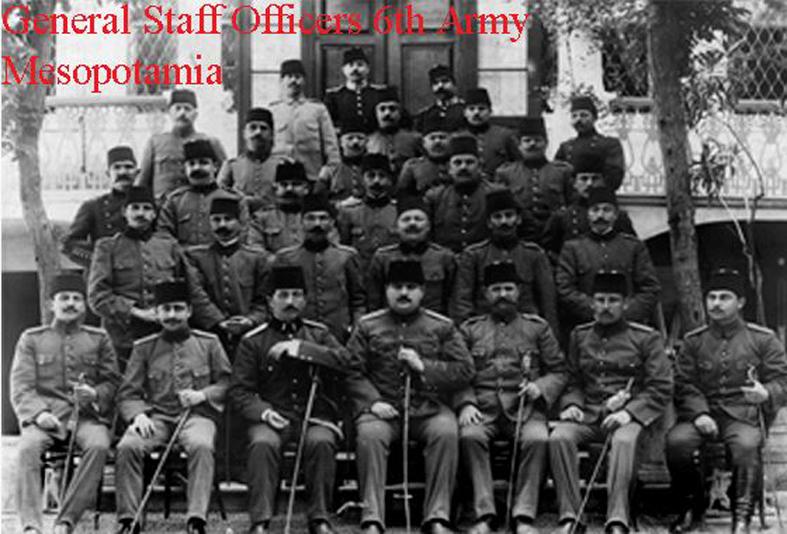A Good Rare Ottoman Army Cavalry Officers Sword Made in Constantinople
Traditional 'P' hilt of regulation Turkish form, langet engraved with the Turkish crescent and star. Deluxe quality fully etched pipe backed blade bearing further star and crescents, florid scrolls stands of arms and etc. Makers name on the blade spine. Photo in the gallery of two Ottoman Turkish Camel Cavalry officers seated, drinking coffee, with their swords at hand. Also photographs of Ottoman General Staff officers. Recently original weapons of the late Ottoman Empire have become very much sought after by Turkish collectors seeking elements of the old Ottoman period. The Germanic style of the sword hilt falls into place in the latter part of the Ottoman Empire with it's alliance with the Kaiser. Beginning in the 1880s, the Ottoman Empire entered into diplomatic relationships, and later military alliance, with Imperial Germany. The Turks wanted to modernize their ramshackle, obsolescent army and build up their navy. The Germans wanted, among other things, a rail link between themselves and the Levant, for strategic and economic reasons.
The equipment of the Turkish Army became Germanized. In 1887, the Ottomans adopted the first of four models of Mauser repeating rifles (total number of variations was seven including carbines) to replace the British and American-made single shots previously used. During this period, regulation swords on the German style were adopted, and the kilij became a thing of the past except in irregular militia formations. The same pattern could be seen in the Ottomans' choice of artillery, saddlery and harness, ships, and even band instruments.
German officers, such as Limon von Sanders, went to Istanbul to supervise the re-training of the Turkish officer corps. The effort was not entirely successful, due to cultural inertia, and personality clashes between the two peoples. When war between Turkey and Bulgaria broke out in 1911-12, the Ottoman forces took a terrible drubbing from the Russian-backed Bulgarians. During World War I, the Ottomans made the ill-advised decision to ally with Germany, and suffered the consequences of ending up on the losing side. By the early 1920's, the Ottoman Empire, the "Devlet Aliyeh" or Exalted Dynasty, was no more. No scabbard
Code: 23260
475.00 GBP

